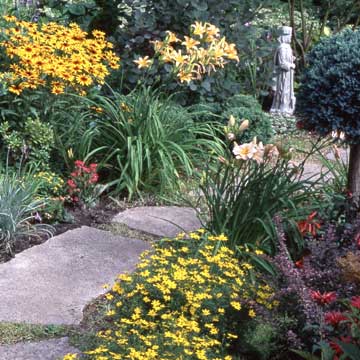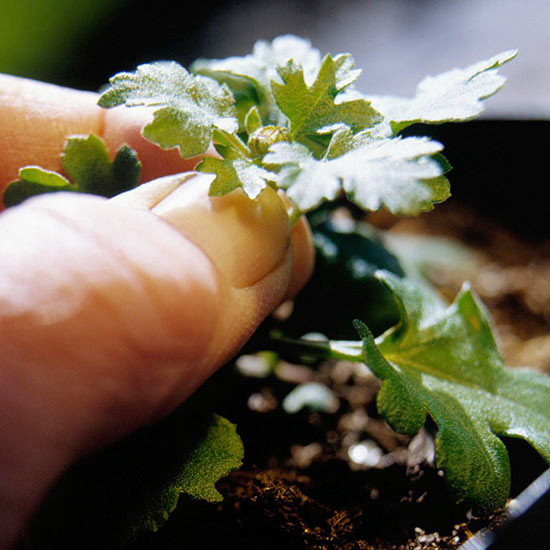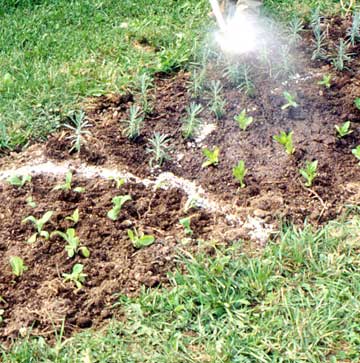






If your garden is a reasonable size, has good soil, and contains low-maintenance perennials, you will probably need to spend no more than two or three hours a week maintaining it. Your chores will be divided into two kinds: ensuring the health of your garden, and maintaining its appearance. After protecting your garden's health, your personal tastes will determine how much time you devote to making your garden look good. Staking, reviewing color schemes, deadheading, and mulching are all important garden beautifiers.
Free Perennial Garden Plans
continue reading below Pinching forces side shoots to develop, creating bushier plants.
Pinching forces side shoots to develop, creating bushier plants.
Pinching is a grooming practice that produces compact, bushy plants. To pinch a plant, remove the growing tip of a stem by nipping it between your thumb and forefinger. Each single pinched stem will divide into two stems.
Pinch spring- and early-summer-blooming plants very early in the growing season. If you pinch too late you may inadvertently remove flower buds. The stems of late-summer and fall bloomers should be cut back -- usually to no more than 1 foot -- in late spring. Numerous side shoots develop from these shorn plants and eventually, these all bear flowers. Pinch fall bloomers, such as mums, no later than July; these plants need the end-of-summer growing season to set flower buds.
The Top 10 Perennials
A great low maintenance perennial? Ornamental grasses; click here to learn more.

Good watering practices are one of the most vital ways to keep your plants healthy. If your plants do not receive adequate moisture, they will die. It is as simple as that.
Either a fixed or a portable watering system will get the job done. Fixed systems are built into your garden and are usually connected to timers so that your garden can be watered even when you are not there. Fixed watering systems can often be found in large public gardens. On the other hand, there are two clear advantages in using portable systems: they are cheaper than fixed systems and they can be moved to exactly where they are needed. Watering or sprinkling cans, hand-held hoses, and many portable sprinkler systems come under this category.
A good-quality garden hose is well worth the investment. When selecting a hose, look for four-ply construction, which provides superior burst resistance; a large diameter (5/8 inch is excellent), which allows water to be delivered faster; and brass couplings, which reduce leaks. When choosing a sprinkler remember that those made of brass and stainless steel last much longer than those made of plastic.
Newer watering tools, such as soaker hoses and other types of drip irrigation systems, are more water-efficient for home gardens. They are built into a garden and literally leak throughout the area in which they are placed. Since these systems are at soil level, the water goes directly to the roots and little is lost to evaporation. The easiest way to install soaker hoses is to lay them through the garden when plants are small, and cover them with a loose mulch.
Smart Watering Techniques
Copyright © www.100flowers.win Botanic Garden All Rights Reserved